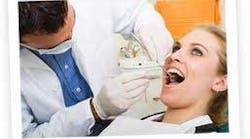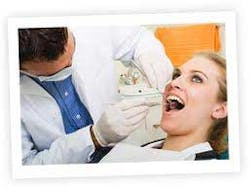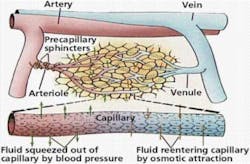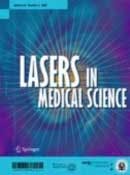Do lasers and photodynamic therapy have a role in periodontal treatment?
LASER means Light Amplification by Stimulated Emission of Radiation. It is a light which can have several wavelengths. Currently, different laser systems are on the market for intraoral use. Depending on the wavelength, they are called diode, Nd:YAG, Er:YAG or CO2. Frequently, laser therapy is used as a desirable and dependable alternative to the traditional scalpel surgery. It is easily able to reshape oral soft tissues and increase homeostasis by heat-induced coagulation and occlusion of arterioles, venules and capillaries. The advantages of the use of LASER technology is that it gives a clear and visible surgical field, it has a bactericidal effect, and causes less pain, swelling and healing time.
References
1. Cobb CM. Non-surgical pocket therapy: Mechanical.Ann Periodontol 1996;1:443-490.
2. Cobb CM. Clinical significance of non-surgical periodontal therapy: An evidence-based perspective of scaling and root planing. J Clin Periodontol 2002; 29(Suppl. 2):6-16.
3. Schwarz F, Aoki A, Becker J, Sculean A. Laser application in non-surgical periodontal therapy: A systematic review. J Clin Periodontol 2008; 35(Suppl. 8):29-44.
4. Cobb CM, Low SB, Coluzzi DJ. Lasers and the treatment of chronic periodontitis. Dent Clin North Am 2010; 54:35-53.
5. Sgolastra F, Petrucci A, Gatto R, and Monaco A. Effectiveness of diode laser as adjunctive therapy to scaling root planning in the treatment of chronic periodontitis: a meta-analysis. Lasers in Medical Science, May 2012, Volume 27, Issue 3, pp 661-673.
6. Slot DE, Kranendonk AA, Paraskevas S, and Van der Weijden F. The Effect of a Pulsed Nd:YAG Laser in Non-Surgical Periodontal Therapy. J Periodontol, 2009 July, 80 (7), 1041-1056.
7. Atieh MA. Photodynamic therapy as an adjunctive treatment for chronic periodontitis: a meta-analysis. Lasers Med Sci. 2010 Jul;25(4):605-13. Epub 2009 Dec 19. PubMed PMID: 20024665.
8. Azarpazhooh A, Shah PS, Tenenbaum HC, Goldberg MB. The effect of photodynamic therapy for periodontitis: A systematic review and meta-analysis. J Periodontol 2010; 81:4-14.
9. American Academy of Periodontology Statement on the Efficacy of Lasers in the Non-Surgical Treatment of Inflammatory Periodontal Disease. J Periodontol, 2011 April, 82 (4): 513 - 514.










